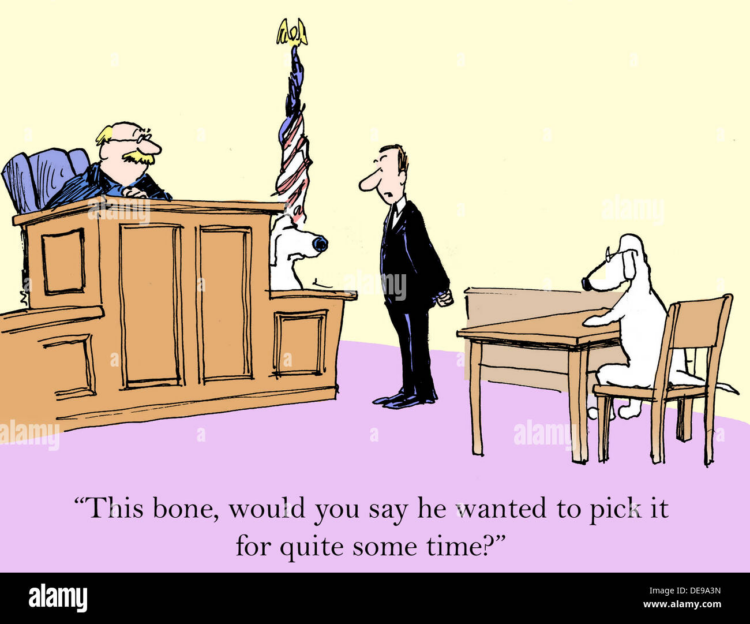Introduction: What Cross Examination Means
[Image from here]
Cross-examination is one of the true arts of advocacy, similar to mastering Harry Potter’s Defence Against the Dark Arts.
It is among the most powerful skills a lawyer can possess. It’s a process where witnesses are tested, stories are challenged, and credibility is either established or destroyed. For law students and aspiring lawyers, mastering cross-examination isn’t solely about understanding the rules; it’s about learning how to think on your feet, identify inconsistencies, and manage the narrative in the courtroom.
Whether you aim to defend a client or dismantle the opposing case, sharp cross-examination skills can mean the difference between winning and losing.
Want to understand the skill better? Dive in!
The Law: Who can be Cross Examined?
[Image from here]
WHEN CAN A PERSON BE CROSS-EXAMINED?
According to Section 138 of the Indian Evidence Act, 1872, and Section 148 of the Bhartiya Sakshya Act 2023, the sequence is quite straightforward: First comes the examination-in-chief, followed by the cross-examination. Essentially, you cannot jump straight into cross-examination without allowing the witness to present their story first during the examination-in-chief. It’s akin to setting the stage before you start poking holes in the narrative.
However, here’s an intriguing twist: if a statement has already been recorded under Section 164 of the Criminal Procedure Code (Cr.P.C), it is regarded as if the individual has already undergone examination-in-chief. This means one can proceed directly to cross-examination without any preliminary discussion.
Why is this the case? The rationale is that the person has already presented their account before a magistrate, rendering it unnecessary to reiterate it in court.
This brings us to some unique scenarios – for instance –
SPECIAL PROVISIONS FOR RECORDING STATEMENTS
The Bharatiya Nagarik Suraksha Sanhita, 2023 (BNSS) introduces a few new dimensions to this matter as per Section 183. When a statement is recorded under Section 164, it is generally preferable for a female Judicial Magistrate to handle it, particularly in sensitive cases.
However, if that is not feasible, a male magistrate may step in, but only if a woman is present. This approach aims to make the process somewhat more comfortable for vulnerable witnesses.
Further, if we’re talking about serious crimes (like ones that could get you ten years, or life imprisonment, or even death penalty), the Judicial Magistrate is required to record the witness’s statement when the police bring them in.
WHAT IF A PARTY DOESN’T WANT TO EXAMINE THEIR OWN WITNESS?
Let’s say a witness appears in court, but the party who summoned them is unwilling to examine them. Perhaps they became hesitant or realised the testimony could have adverse consequences. You still have options. Under Section 300 of the Cr.P.C. (and Section 346 of the BNSS), you can request the court to permit you to cross-examine that witness nonetheless, utilising the facts that are already on record.
It’s a rather clever move: why waste the opportunity to challenge the witness merely because the other side has second thoughts? Furthermore, if the opposing party isn’t cross-examining, you can even request that the court records the examination-in-chief and conclude it right there. The court can then dispense with any further questioning, which is a clever way to keep the trial progressing.
WHAT IF THE JUDGE IS TRANSFERRED MID-TRIAL?
Ah, the classic transfer scenario. If this occurs, the new judge can resume the cross-examination exactly where it was halted. There is no need to start anew. However, at times, you might feel that the new judge isn’t fully grasping the context or that you need to clarify some confusion.
In such cases, you may request the court to recall the witness and conduct the examination or cross-examination again. Section 326 Cr.P.C. and Section 365 of the BNSS permit this flexibility. It serves as a useful tool, particularly when different judges interpret the same evidence in various ways.
CROSS-EXAMINING ON PREVIOUS STATEMENTS
Now, this is where it becomes tactical. Under Section 145 of the Indian Evidence Act (and Section 148 of the Bharatiya Sakshya Adhiniyam (BSA)), you may cross-examine a witness regarding their previous written statements. This is your moment to catch them out. If you notice any contradictions, you can confront them. However, there’s a catch: you must show them the specific parts you intend to use against them before you start questioning them.
Why? It’s about fairness. The idea is to give the witness an opportunity to explain the inconsistency before you go on the offensive. It’s a bit of a double-edged sword because it also gives them a heads-up, but that’s the rule. Thus, if executed correctly, it can entirely undermine the witness’s credibility.
WHO CAN BE CROSS-EXAMINED?
Under Section 139 of the Indian Evidence Act, 1872, and Section 144 of the BSA, only an individual who has been called as a witness may be cross-examined. That’s quite straightforward: you cannot cross-examine someone who is merely present to submit documents.
They are essentially a messenger, not a storyteller. Conversely, if a person has been called to testify regarding another’s character, they are subject to cross-examination. This is logical, as character witnesses often possess biases, and challenging them can expose any hidden agendas.
Why Know the Skill of Cross Examination?
[Image from here]
TESTING VERACITY (Section 146(1) & 153, IEA / Sections 149(1) & 156, BSA)
Cross-examination is where you ascertain whether a witness is telling the truth or merely acting. It’s akin to fact-checking in real time. If they slip up and contradict what they stated during the examination-in-chief, you have an opportunity to highlight the inconsistency. It’s all about identifying flaws in their narrative and determining if it holds up under scrutiny.
DISCOVERING WHO THE WITNESS IS (Section 146(1), IEA / Section 149(1), BSA)
It’s not just about what the witness says; it’s about who they are. At the beginning of cross-examination, you typically ask some fundamental questions: Who are you? How do you know the accused? What’s your background? This isn’t mere small talk. It’s about determining how much weight the court should assign to their testimony. If they’re biased or have a personal interest in the case, you’ll want to emphasise that immediately.
IMPEACHING CREDIBILITY (Section 146(3), IEA / Section 149(3), BSA)
This is where things become slightly ruthless. If the witness is from the opposing party, you can directly challenge their credibility.
But what if it’s your own witness who suddenly turns hostile? No problem. You can still go after their credibility, but you must seek the court’s permission first. It’s about damage control, ensuring a “friendly” witness doesn’t end up jeopardising your case.
ELICITING POSITIVE FACTS
Cross-examination isn’t merely about challenging the other side. It also presents an opportunity to obtain valuable information that bolsters your account of events. Occasionally, a witness inadvertently admits something that fortifies your case or undermines your opponent’s.
When this occurs, you highlight those points, ensuring the judge is aware of them. It’s akin to transforming the opposing side’s witness into your own.
CHALLENGING ACCURACY OF TESTIMONY
Witnesses are human. They observe things differently, remember selectively, and sometimes exaggerate. During cross-examination, you can question their observations (“Were you really close enough to see that clearly?”), challenge their memory (“Are you sure you remember that detail after all this time?”), or even suggest they’re exaggerating. It’s all about demonstrating that their version of events might not be as reliable as they claim.
Pro Tips on Cross Examination
- Use Leading Questions (but with caution): Control the narrative with questions that require a “yes” or “no” answer.
- Tailor to the Witness: Customize questions based on the witness’s role and your strategy.
- Prepare in Advance: Know the case inside out to spot contradictions and omissions.
- Keep It Short and Simple: Ask concise questions to avoid giving the witness room to recover.
- Know the Records: Be thoroughly familiar with all documents and evidence.
- Visit the Crime Scene: If relevant, seeing the location can inform better questioning.
- Have a Clear Goal: Know exactly what you want to achieve with each question.
- Stay Respectful and Composed: Be firm but polite, even if things don’t go your way.
- Be Confident: Maintain eye contact and assertiveness to stay in control.
- Keep Your Cool: Stay calm and adjust your strategy when faced with unexpected answers.
- Some Final Thoughts
Here are some key takeaways apart from the above discussion:
- A magistrate isn’t bound by the police report under Section 173 CrPC or Section 103 BNSS.
- In criminal cases, proof must be ‘beyond reasonable doubt.’
- The burden of proof in most cases lies with the prosecution in a criminal trial.
- Whoever asserts a fact must prove it.
- Police can arrest to protect witnesses under Section 41(1)(d) CrPC/Section 35 BNSS.
- Guidelines exist for protecting witnesses’ safety.
- The court can demand necessary documents under Section 91 CrPC/Section 94 BNSS.
- Public Documents must be verified with an authority’s certificate.
- Only exhibited documents are considered as evidence.
- Only called witnesses can be cross-examined.
- Witnesses are examined-in-chief first, then cross-examined.
Here are some interesting resources to give you an edge in cross-examination:
- Five Steps to an Effective Cross-Examination (Lexis Nexis – here)
- How To Prepare For Cross Examination Of Witnesses: Tips From Senior Adv Rebecca John (Live Law – here)
Learn better by listening and seeing? Here are some video resources:
- Mastering the art of Cross-Examination: Practical tips with law – Justice Ved Parkash Sharma (Beyond Law CLC – here)
- “Cross Examination in Criminal Trials” by Hon’ble Mr. Justice Pradeep Nandrajog (IBJ India – here)
- Fundamentals of Cross Examination | Amit George | Webinar (Alumni Cell NALSAR – here)
Mastering these principles is crucial for effective criminal litigation. Ready to dive deeper? Enroll in our ‘Lawctopus’ Online Course on ‘Criminal Proceedings & Drafting: Complaints, FIRs, Bails, Applications, Appeals, and More’ today and sharpen your advocacy skills!
You will get:
- Well-researched, practical, and detailed Reading Resources, Masterclasses by Distinguished Experts, and Recorded Lectures by Criminal Law Experts.
- Compilation of important case laws, criminal terminologies, and Short Reading Resources on important topics.
- Weekly Live Sessions to dive deeper, address your doubts, and learn the practicalities of each Draft.
- Compulsory Practical Assignments, including drafting an Anticipatory Bail Application, a Quashing Petition, and an Application for Maintenance under Section 125, CrPC.
- In-depth evaluation of your assignments and personalized feedback from the faculty, along with Self-Assessment Assignments.
- Understanding of the foundation of Criminal Law in India, the Criminal Courts of India, and the Pre-trial, Trial, and Post-Trial stages of Criminal Litigation.
- Skills to ace your internships, start taking work around this practice area as a young lawyer, and access to Important Case Laws, Sample Drafts, and insights from popular legal luminaries.



